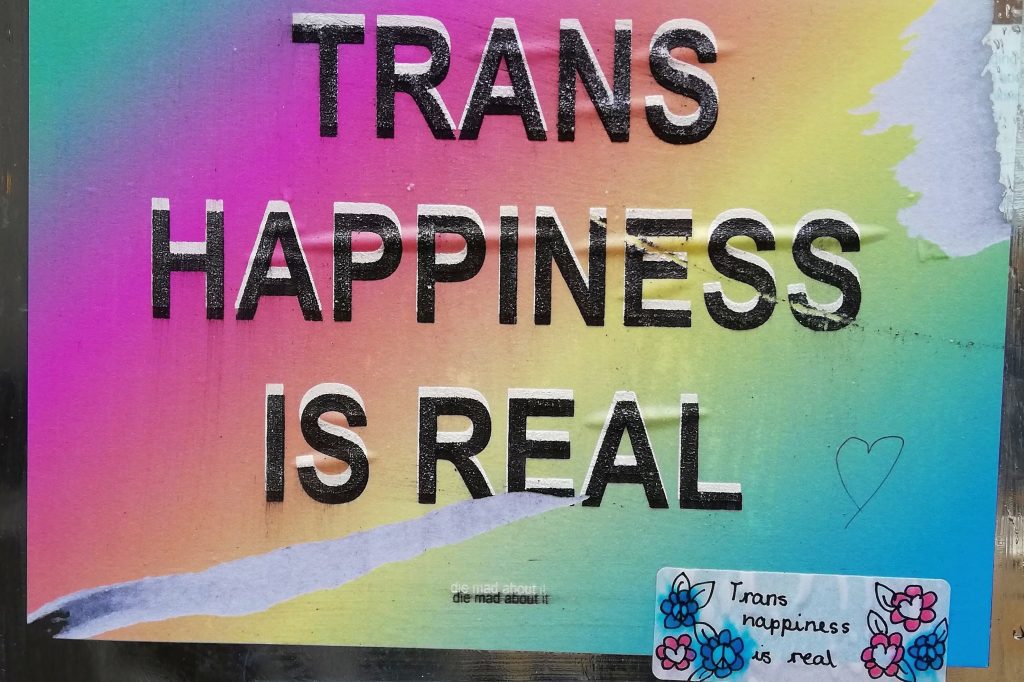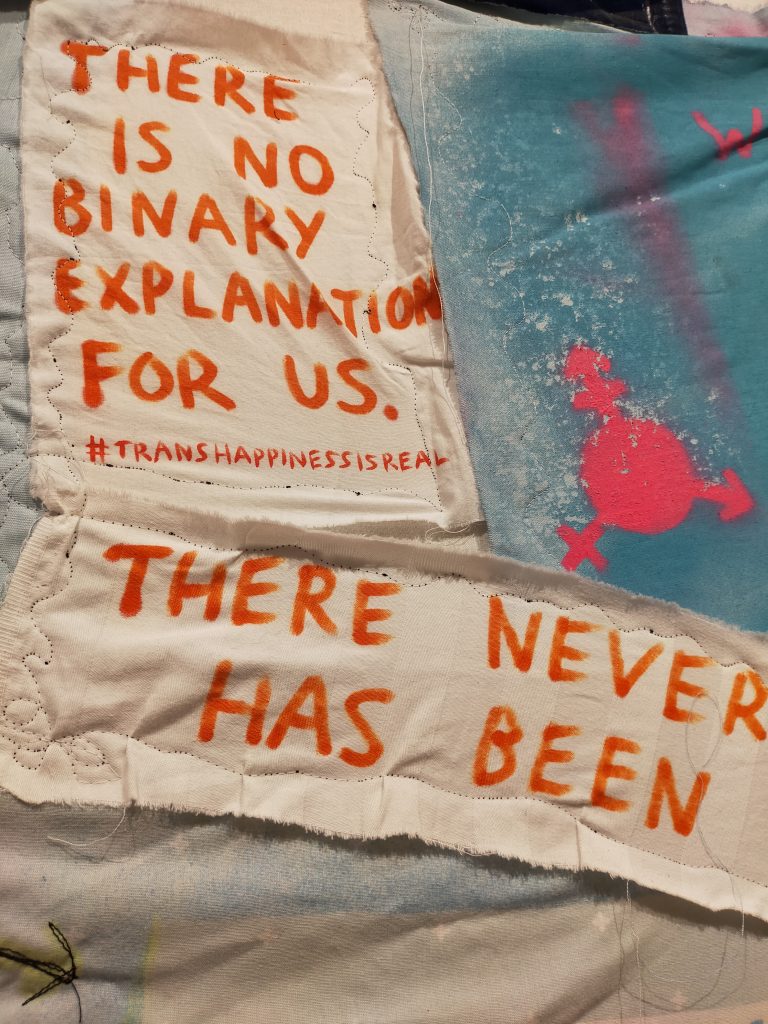Trans Happiness is Real: Oxford’s graffiti art
In February 2019, brightly coloured graffiti art began appearing across Oxford’s streets. Messages emblazoned across lamp posts and street corners included ‘Trans happiness is real’ and ‘There is no binary explanation for us.’ This eye-catching street art is by a group of anonymous young activists, who join us for a special Instagram takeover between 21-24 August 2021.
In their blog below, learn how the group spreads trans-positive messages through their creative interventions, the ‘TERF’ graffiti wars they still face and their latest textiles project in one of Oxford’s best known museums.
Content warning: Please note this blog post contains references to suicide.
Art does nothing if it doesn’t speak to people, and to do that it needs to connect with them: be present in their daily lives. In February 2019, we found a message we needed to share with ourselves and the public, and so to do that as broadly as we could, we screen printed it onto rainbow paper, and wheat pasted it onto the streets: TRANS HAPPINESS IS REAL. We have been screaming it into the city through various media ever since.
TRANS HAPPINESS IS REAL. TRANS HAPPINESS IS REAL. TRANS HAPPINESS IS REAL. die mad about it.

We started an Instagram project to share and document the street art, spread it through the digital streets people traverse daily, as well as the physical ones of the city. We drove up hard against the transphobia which has been having a hot moment in recent years, as trans people and trans art/activism become more visible. Our posters were vandalised, of course, the ‘TRANS’ parts ripped away or covered up, but we also began seeing transphobic stickers stuck up around Oxford, spreading TERF* diatribes with crude diagrams, twice a day every day – an incredible commitment to hate.
At this point we realised we had to not only get our message into people’s daily lives, but also fight to take up space, take over the narrative, and stake a claim for the spaces of Oxford to be trans-positive.
I say ‘had to’ because we felt this was work we had a deep responsibility to do (not just make) – driven by the combination of messages telling us to commit suicide, and many more others telling us people had seen our work and been filled with joy, strength and a sense of connection. When you’re trans, messages about whether you should be allowed to exist are inescapably both personal and political.
From the beginning, others got involved and the streets turned into a giant conversation: transphobes saying to us ‘you are perverse, you are disgusting and violent and shameful, you do not belong here’, and trans people and allies saying to each other ‘you are strong, you are full of the potential for happiness, I see you, I am here too’.
The snowballing moment turned into a snowballing movement, and our rainbow-printed efforts were quickly supported by an increasing squadron of stickerers – we don’t know each other, but we are known to each other through the visual physical space we are claiming in the city.
As stickers by multiple hands have gone up, and been scratched down, and gone up, and been covered up, and gone up again, we at @transhappinessisreal have worked at using different media and placement to keep speaking to people on the streets. We have cycled through posters, moss, zines, graffiti and stencilled spray paint, and finally landed squarely in textiles – as the culmination of durability and tactility we’re obsessing over as we try to make work that’s PRESENT to people.

Some of our recent work can right now be seen and touched (if you wash your hands) in the Pitt Rivers Museum’s Beyond the Binary exhibitition; our ‘Frankenstein’ is a 6m square patchwork, pieced together from contributions from our community.
With the knowledge that old sheets can be wheatpasted up, dyed, crocheted, and will take some effort to rip apart into nothing, other textile work has rooted on the street, and more is to come. #TransFuturesAreBright
*’TERF’ stands for ‘Trans-Exclusionary Radical Feminist’; a movement which labels itself ‘radical feminist’, but which excludes trans women and contributes a lot of hate to global transphobia, and so actually cannot be considered feminist.
Words by @transhappinessisreal
Follow the group on Instagram here.
Explore Beyond the Binary on the Pitt Rivers Museum website here.
With thanks to George Fitzsimons who helped to commission this takeover for Modern Art Oxford.
